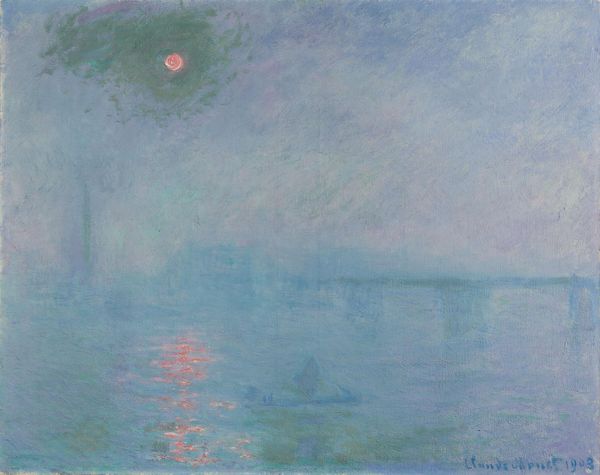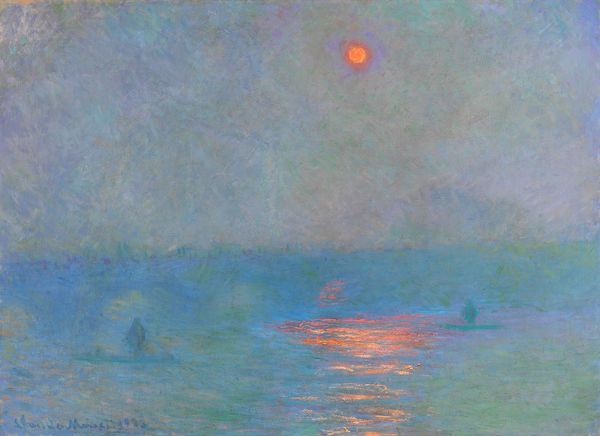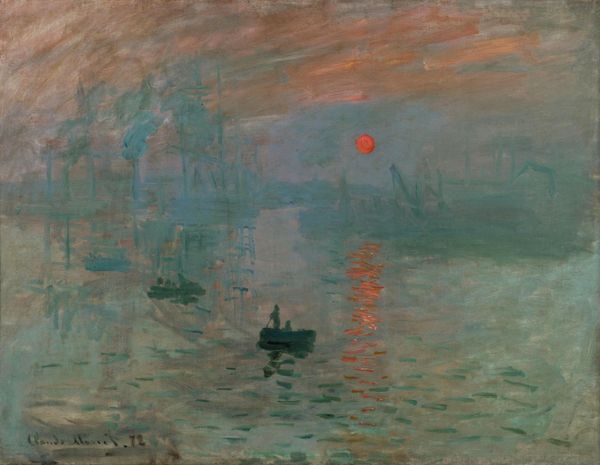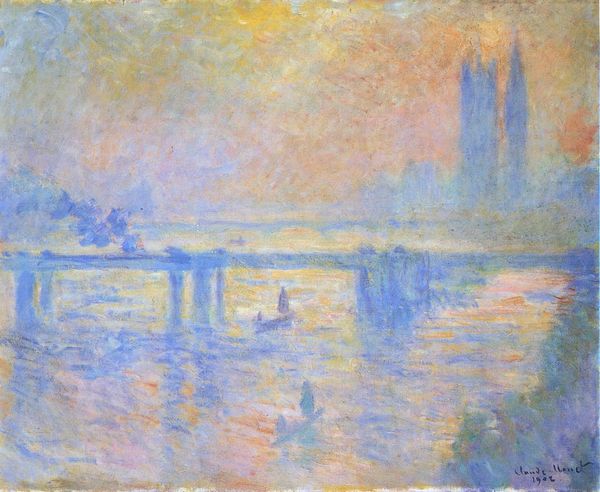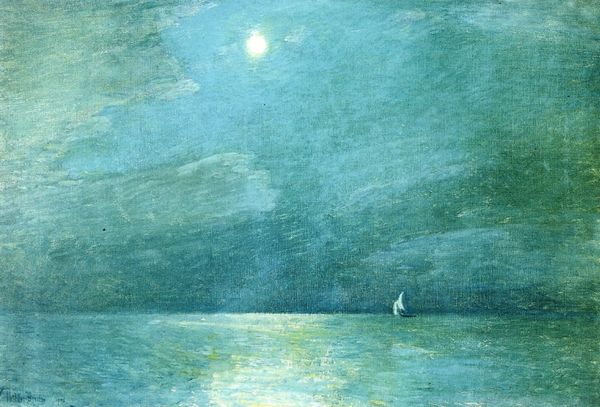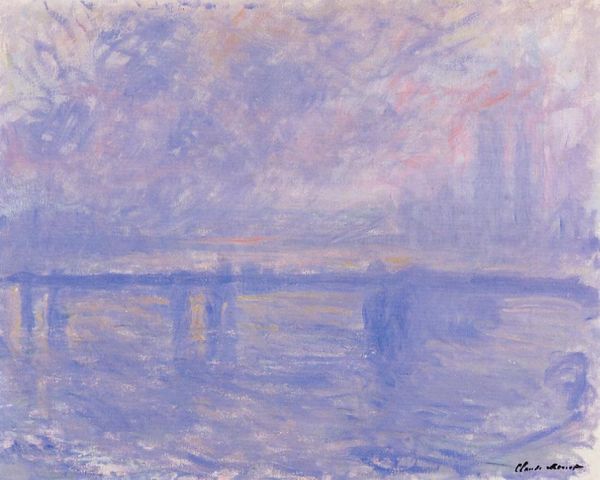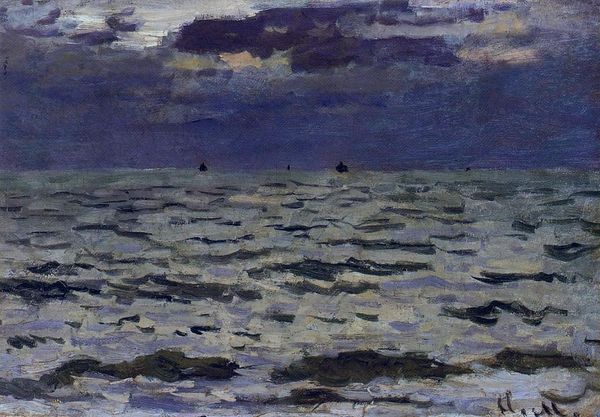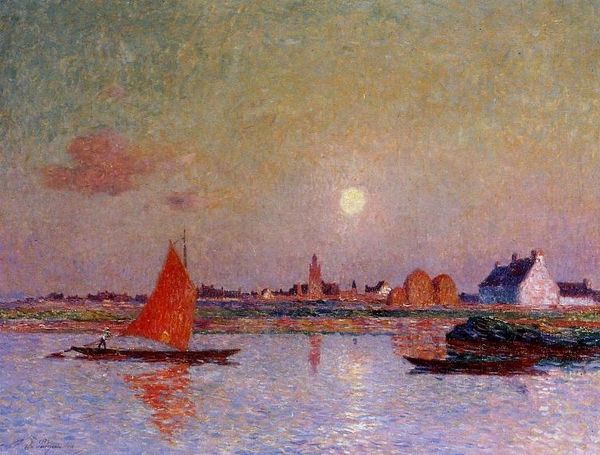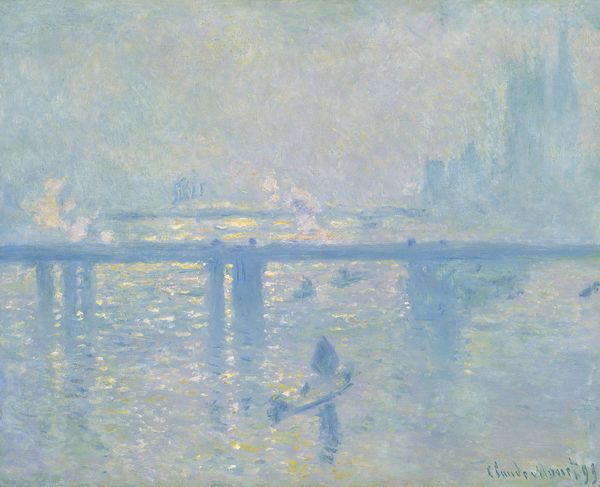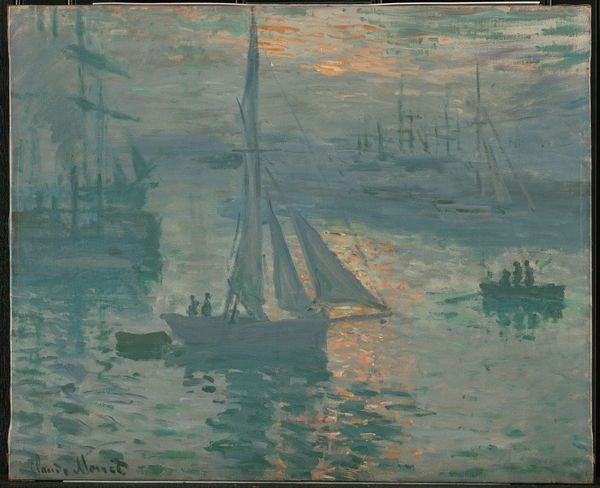
Copyright: Public domain
Editor: This is Claude Monet’s "Charing Cross Bridge, Fog on the Thames," created in 1903. There's a dreamy, almost melancholic quality to the pervasive blues and grays. What's your interpretation of this piece? Curator: The fog itself becomes a character. Notice how it obscures and softens the rigid architecture of the bridge. This interplay between the industrial and the atmospheric evokes a potent symbolism. It mirrors the shift in Europe at the turn of the century – a world wrestling with rapid industrialization and clinging to romantic ideals. What emotions does the blurred skyline trigger for you? Editor: A sense of transience, definitely. The bridge feels almost ghostly, fading in and out. Is the reddish orb meant to be the sun, filtered through the haze? Curator: Precisely! That orb is a powerful, primal symbol. The sun, the source of life, rendered weak and diluted by the fog. Consider the psychological weight: the diminishment of a life-giving force mirroring anxieties about modernity overwhelming tradition. The Impressionists weren’t merely painting pretty scenes; they captured the emotional undercurrents of their time through subtle visual cues. Do you think that tension still resonates today? Editor: Absolutely. The painting feels surprisingly relevant with today's anxieties about climate change and the industrial impact on nature. I'm struck by how such a simple image can contain so much cultural weight. Curator: Indeed, the Thames fog, rendered in delicate watercolor, speaks volumes about a culture in flux, a memory of a pre-industrial world fading behind the modern landscape. Editor: I'll definitely be paying closer attention to the symbolism in Impressionist paintings from now on. Curator: An exploration of cultural memory and visual symbol makes looking at paintings from new perspectives exciting.
Comments
No comments
Be the first to comment and join the conversation on the ultimate creative platform.
